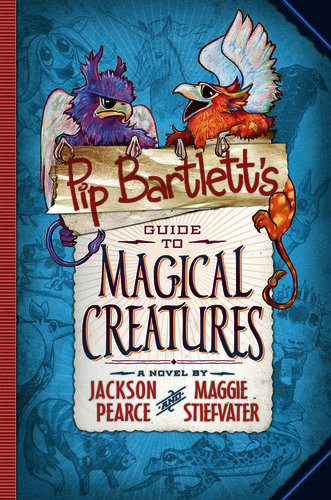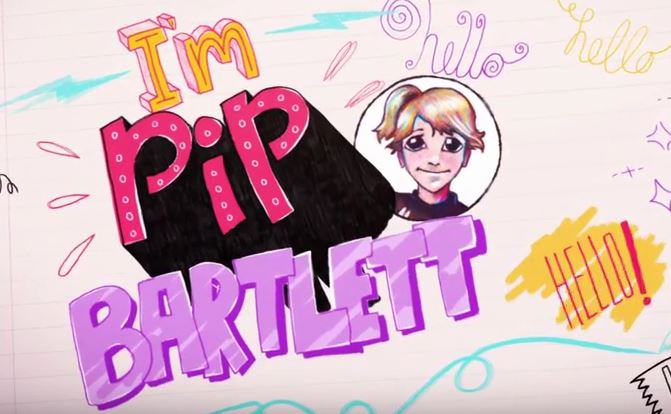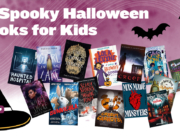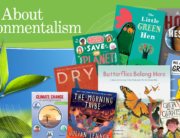I picked up Pip Bartlett’s Guide to Magical Creatures (Grades 3-7, Lexile 690) because I saw the name Maggie Stiefvater on a bright, cheery middle-grade Scholastic cover. I was curious because, of course, I associate her name with fantasy YA titles (namely, books from The Wolves of Mercy Falls and The Raven Cycle series). Based on the cover, I expected a fun, light read, but I walked away feeling impressed by what Stiefvater (who also illustrated the book) and co-author, Jackson Pearce, accomplished. This book definitely has wholesome, “cutesy” appeal, but, at the same time,  qualities that recommend it for science and writing lessons in the classroom.
qualities that recommend it for science and writing lessons in the classroom.
About the Story
The story opens with what will go down in history (or at least in protagonist Pip Bartlett’s mind) as “The Unicorn Incident,” a comically catastrophic event that occurs on Career Day at Pip’s school. In this opening scene, readers learn that Pip Bartlett can talk to magical creatures … and that a unicorn’s arrogance can be a very dangerous thing! Let’s just say that a conversation with some pompous unicorns gets out of control—fast! Afterward, Pip is sent to her aunt’s home for the summer. Her aunt is a vet for magical creatures, a dream-come-true for Pip who will now have the chance to really practice her gift—hopefully with more success!
Almost as soon as she arrives at her aunt’s clinic in Cloverton she gets her chance. A Lilac-Horned Pomeranian, a Common HobGrackle, and a Miniature Silky Griffin are there to greet her. In addition, she soon encounters a magical pest: a fuzzle! These fist-sized furballs travel in herds, produce offspring quickly and combust into flames when excited or scared. Worrying, right? Even more alarming, they are invading the town. Pip takes it upon herself to discover the reason for the fuzzle invasion. She finds that fuzzles are really quite harmless when they aren’t under stress. With the help of a new friend, Tomas, and other people who love animals as much as she does, she will do everything she can to save them from extermination at the hand of Mrs. Dreadbatch, the malicious agent from the Supernatural/Magical Animal Care, Keeping, and Education Department who will stop at nothing to rid the town of the fuzzles.
 A couple of my co-workers pointed out that fuzzles are very similar to the titular pest in the Star Trek episode, “The Trouble with Tribbles.” |
 The excerpt from Jeffery Higgleston’s Guide to Magical Creatures describing fuzzles. |
|---|
Pip’s Scientific Thinking
Pip approaches the problem of the fuzzles like a scientist. She carefully observes and documents all the qualities and characteristic of fuzzles. Next, she

An excerpt from Jeffery Higgleston’s Guide to Magical Creatures with Pip’s revisions.
proposes a hypothesis about their increasing population in her community. Then, with the help of her friends, she verifies her hypothesis. Pip demonstrates the curiosity and inquiry it takes to solve real-world ecological problems.
Pip Reads and Writes Informational Texts
Pip can practically recite all of Jeffery Higgleston’s Guide to Magical Creatures (an informational text about magical creatures that she carries with her everywhere), and throughout the book she revises the pages of the guide with her own unique insights. As a person with the special ability to converse with magical creatures, she is, indeed, uniquely perceptive!
My favorite part of Pip Bartlett’s Guide To Magical Creatures was learning about the different magical creatures. I couldn’t wait to get to the next excerpt from Jeffery Higgleston’s guide and to see how Pip would revise it based on her own observations. This format could be a helpful device for kids who struggle with fantasy and fiction in general. Conversely, the nonfiction elements might help students who enjoy nonfiction animal books stretch their reading horizons.

*Pip Bartlett’s Guide to Magical Creatures has been nominated for a Scout Award, an internal Booksource award. Booksource will nominate books throughout the year and then ask readers to vote on their favorites to determine the winners. The Scout Award is named in honor of the main character of Booksource’s most popular title, To Kill a Mockingbird. Read more about the awards here.








Leave A Comment